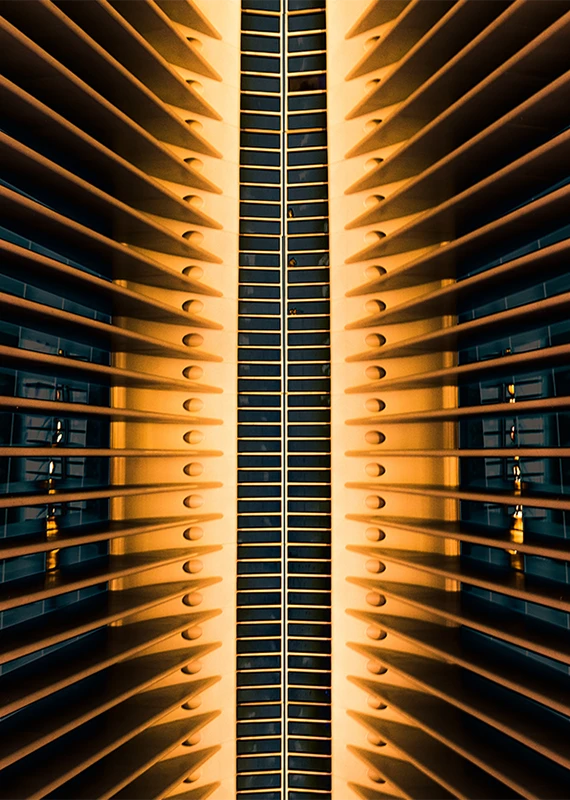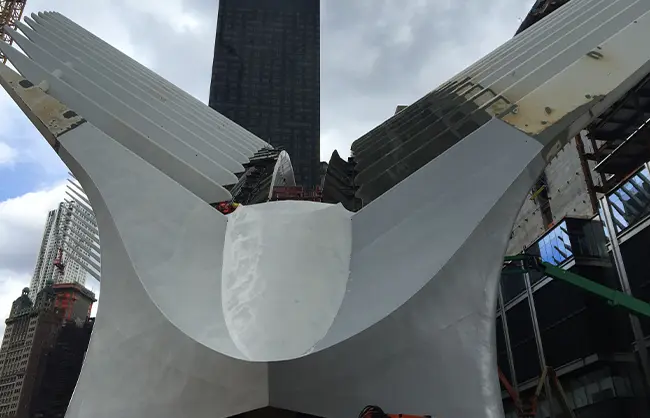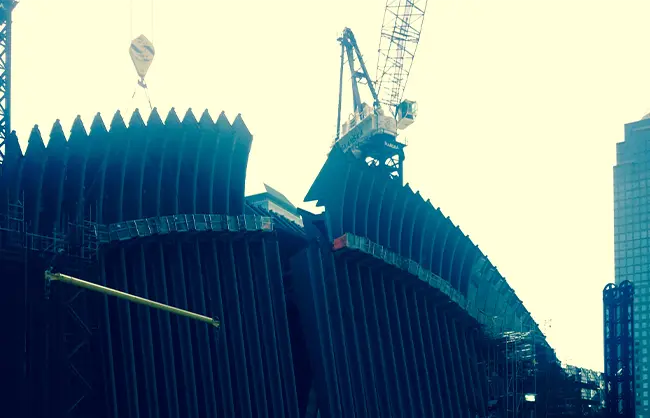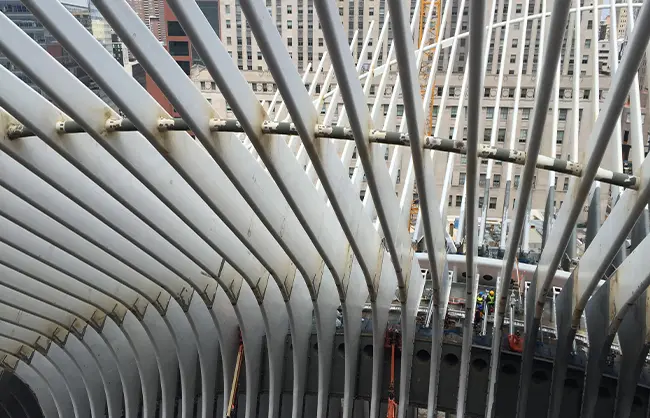HYTORC Tools in the Construction of Oculus Pavilion

Background
The Oculus Pavilion, located in the World Trade Center Transportation Hub, is a modern architectural landmark. Designed by Santiago Calatrava, the structure is a representation of New York City's strength and resilience after 9/11. The structure opened in March 2016 and facilitates smooth passage for the quarter-of-a-million commuters and shoppers who traverse through the connection to 11 subway lines and the PATH rail lines linking New York and New Jersey daily. It also boasts a 290,000-square-foot retail mall with more than 100 retail stores. Calatrava's design, with its white steel ribs reaching skyward, evokes the imagery of a dove released into the air by a child's hands, further enhancing the structure's symbolic significance.
Customer Challenge
This architectural masterpiece presented a set of extraordinary challenges. The design's grand ribs, extending above ground to connect to towering arches and outward over the street-level plaza, required precise assembly to maintain Calatrava's vision of seamless lines and aesthetic coherence.
One of the most formidable challenges was the internal placement of bolted joints, necessitating access to nearly inaccessible locations for tools and fasteners. This constraint demanded an innovative approach to bolting, as traditional methods would be impractical. Furthermore, the extreme angles inherent in the design heightened the risk of tools becoming irreversibly wedged into the structure, posing a significant threat to both the project's progress and the integrity of the Oculus Pavilion.
The design's grand ribs, extending above ground to connect to towering arches and outward over the street-level plaza, required precise assembly to maintain Calatrava's vision of seamless lines and aesthetic coherence.

How HYTORC Went Above and Beyond to Provide Support
HYTORC played a pivotal and unique role in the construction of the Oculus Pavilion, contributing essential bolting engineering technology and tools crucial for assembling the steel rib structure. Addressing the project's challenges required a comprehensive understanding of both the architectural design and the limitations of traditional bolting techniques.
HYTORC developed a tailored solution to meet the project's unique requirements. Working closely with the bolting crew, HYTORC engineers devised a strategy using hydraulic STEALTH tools that was specially designed to navigate tight spaces and apply precise torque even in these challenging conditions.
Using two sizes of STEALTH tools allowed workers to operate efficiently within the confined spaces of the Oculus structure, achieving the desired torque without compromising the integrity of the joints. Through innovative engineering and meticulous planning, HYTORC ensured that the construction process remained on track while upholding Calatrava's vision for the project.
Despite the complexities inherent in the project, the use of HYTORC tools facilitated the assembly of the steel rib structure with precision and accuracy.
The Result
Thanks to HYTORC's expertise and innovative solutions, the construction of the Oculus Pavilion proceeded smoothly and efficiently. Despite the complexities inherent in the project, the use of HYTORC tools facilitated the assembly of the steel rib structure with precision and accuracy, preserving both the aesthetic appeal and structural integrity of this one-of-a-kind building.
Today, commuters and visitors to the Oculus Pavilion enjoy a seamless experience, moving effortlessly through the plaza and retail mall. As a vital component of the World Trade Center Transportation Hub, the Oculus stands as a symbol of architectural excellence and engineering innovation, made possible in part by HYTORC's dedication to providing cutting-edge bolting solutions.





